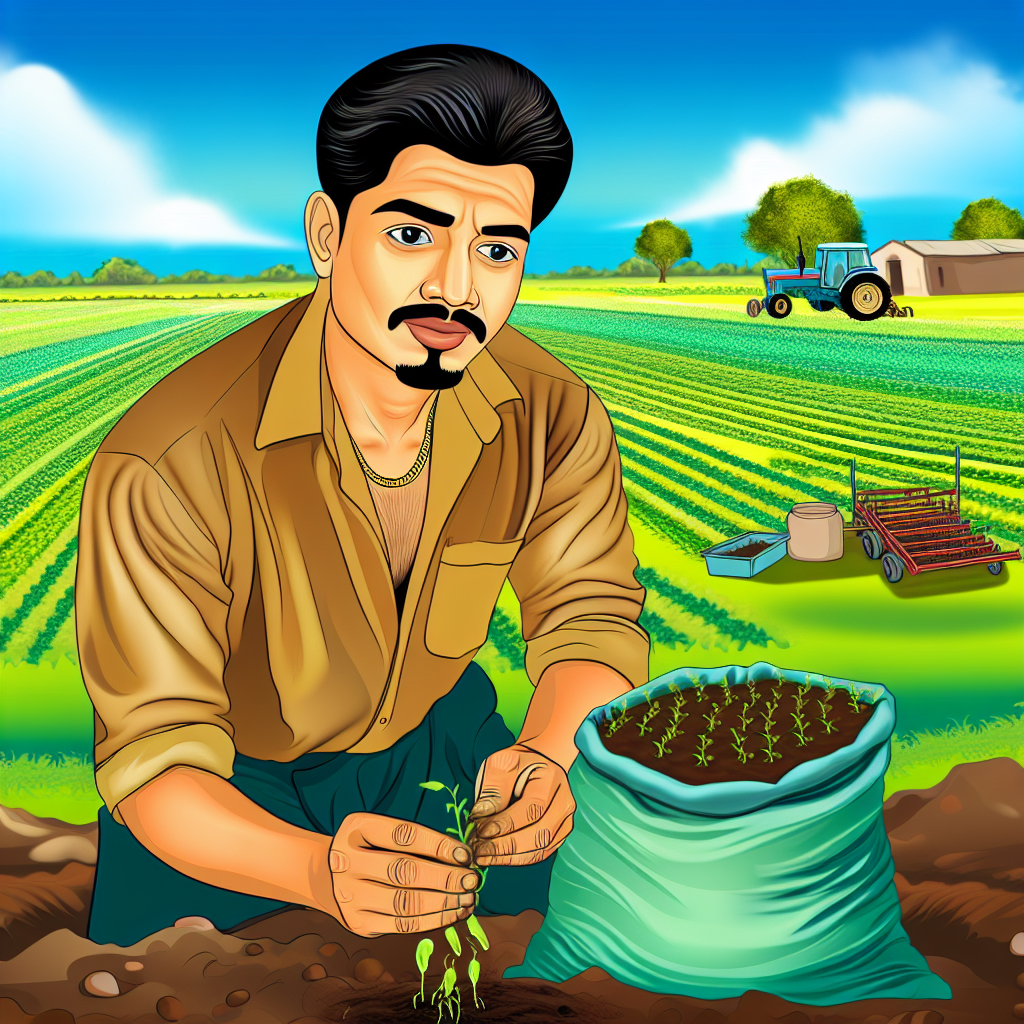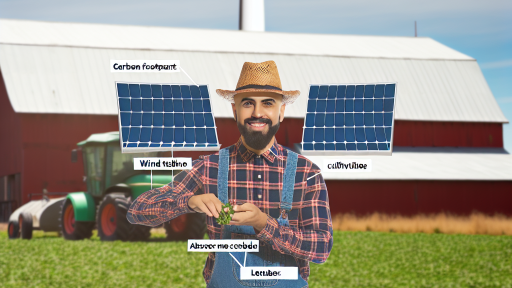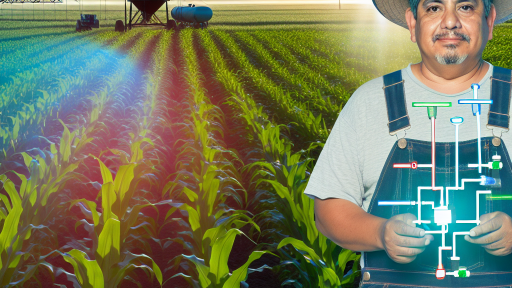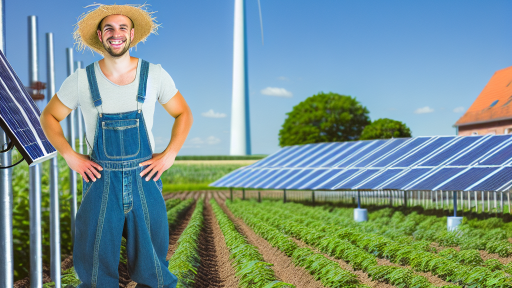Implementing Cover Crops
Importance of Cover Crops
Cover crops play a pivotal role in sustainable agriculture.
They improve soil health by enhancing its structure.
Furthermore, they increase organic matter content in the soil.
By planting cover crops, farmers can mitigate soil erosion.
This helps retain valuable topsoil and prevent nutrient loss.
Impact on Water Retention
One of the significant benefits of cover crops is water retention.
These plants promote better moisture infiltration in the soil.
As a result, they reduce surface runoff during heavy rains.
Moreover, cover crops help maintain soil moisture during dry spells.
This can lead to more consistent crop yields over time.
Types of Cover Crops
Diverse types of cover crops serve various purposes.
- Cereal grains like rye and oats bolster soil structure.
- Legumes such as clover and vetch fix nitrogen in the soil.
- Brassicas like radishes can break compacted soil layers.
Choosing the right type can maximize benefits depending on specific goals.
Best Practices for Implementing Cover Crops
To successfully implement cover crops, farmers should follow best practices.
First, select species appropriate for the local climate and soil type.
Next, consider planting timing to align with main crops.
Transform Your Agribusiness
Unlock your farm's potential with expert advice tailored to your needs. Get actionable steps that drive real results.
Get StartedAdditionally, ensure proper termination of cover crops before planting.
This helps to prevent competition with main crops for nutrients.
Overview of Water Retention and Its Importance in Farming
Understanding Water Retention
Water retention refers to the ability of soil to hold water for use by plants.
This process is essential for maintaining healthy crops.
Soil with good water retention can support plant growth during dry spells.
Moreover, it reduces the need for frequent irrigation.
The Role of Water in Agriculture
Water serves as a vital resource in agriculture.
Crops rely on water for photosynthesis and nutrient absorption.
Without adequate water, crops face stress and diminished yields.
Additionally, crops with insufficient moisture are more susceptible to pests and diseases.
Importance of Water Retention in Farming
Agricultural practices should prioritize water retention for several reasons.
- Improved crop yields contribute to food security.
- Efficient water usage preserves precious resources.
- Enhanced soil health leads to better long-term sustainability.
Furthermore, high water retention helps mitigate soil erosion.
This benefit is particularly crucial in areas prone to heavy rainfall.
Challenges of Poor Water Retention
Poor water retention can lead to several farming challenges.
Soil erosion can strip away the top layer of fertile soil.
Additionally, it can cause runoff, leading to nutrient loss.
This loss ultimately reduces soil fertility over time.
Farms may also experience increased costs due to higher irrigation needs.
Strategies for Optimizing Water Retention
Farmers must implement strategies to enhance their soil’s water-holding capacity.
Such strategies can lead to more sustainable and productive agricultural systems.
Types of Cover Crops that are Effective for Enhancing Water Retention
Leguminous Cover Crops
Leguminous cover crops are beneficial for soil health and water retention.
They include varieties such as clover and vetch.
These crops fix nitrogen in the soil, enhancing fertility.
Moreover, their root systems improve soil structure.
Showcase Your Farming Business
Publish your professional farming services profile on our blog for a one-time fee of $200 and reach a dedicated audience of farmers and agribusiness owners.
Publish Your ProfileAs a result, they increase aeration and water infiltration.
Grasses as Cover Crops
Grasses like rye and barley effectively reduce soil erosion.
Their dense root systems help hold soil in place.
Additionally, they create a mat that slows water runoff.
This mat also promotes better moisture retention in the soil.
Using grasses aids in suppressing weeds, benefiting crops.
Brassicas and Other Forage Crops
Brassicas, such as radishes, enhance soil health significantly.
They break up compacted soils with their powerful taproots.
Furthermore, these crops also scavenge nutrients, reducing leaching.
Other forage crops can improve biodiversity and soil structure.
Incorporating a variety of crops leads to improved resilience.
Mixing Cover Crops for Optimal Results
Mixing different types of cover crops can amplify benefits.
A diverse cover crop mix enhances soil structure and health.
This combination can capture more moisture, making it available for future crops.
Also, it reduces risks associated with pests and diseases.
Farmers should consider their specific soil and climate conditions.
Discover More: Benefits of Renewable Energy for Modern Farmers
Steps to Implement Cover Crops for Optimal Water Management
Choosing the Right Cover Crops
Select cover crops that suit your specific soil conditions.
Consider plants that thrive in your local climate.
Legumes can add nitrogen while preventing soil erosion.
Grasses improve soil structure through root growth.
Explore combinations for diverse benefits.
Timing of Planting
Plant cover crops after your main crops are harvested.
This helps reduce soil erosion during off-seasons.
Consider the growing season and your region’s climate.
Timing is crucial for successful establishment.
Seed Preparation and Planting Techniques
Use high-quality seeds tailored for your cover crop choice.
Prepare the seedbed properly to ensure good soil contact.
Plant seeds at the appropriate depth for optimal growth.
Employ methods like broadcasting or drilling for even distribution.
Managing Cover Crop Growth
Monitor cover crop growth throughout the season.
This ensures they thrive and provide intended benefits.
Fertilization may be necessary depending on plant health.
Weed management helps reduce competition for resources.
Termination Practices
Choose a termination method that suits your management style.
Common methods include mowing, rolling, or herbicide application.
Timing of termination affects residue cover and soil health.
Ensure that crops are adequately killed before planting your main crop.
Incorporating into Main Crop Rotation
Rotate cover crops with main crops to enhance soil health.
This diversifies crop production and increases resilience.
Showcase Your Farming Business
Publish your professional farming services profile on our blog for a one-time fee of $200 and reach a dedicated audience of farmers and agribusiness owners.
Publish Your ProfileConsider how cover crops can improve nutrient cycling.
Evaluate the overall impact on water retention within the soil.
Gain More Insights: Climate Risks And Crop Yield Declines
The Benefits of Cover Crops Beyond Water Retention
Improving Soil Health
Cover crops significantly enhance soil health.
They prevent erosion and promote the formation of organic matter.
This organic matter enriches the soil with essential nutrients.
Moreover, cover crops improve soil structure and aeration.
Healthy soil retains water more effectively and supports plant growth.
Enhancing Biodiversity
Cover crops boost biodiversity in agricultural ecosystems.
They provide habitats for various beneficial organisms.
These organisms include insects, birds, and beneficial microbes.
Increased biodiversity helps control pests naturally.
Additionally, diverse root structures improve soil health and stability.
Reducing Soil Compaction
Cover crops aid in reducing soil compaction.
They penetrate compacted soil layers with deep roots.
This penetration allows for better root growth in subsequent crops.
As a result, crops access nutrients and water more efficiently.
Furthermore, reduced compaction leads to enhanced air movement in soil.
Suppressing Weeds
Cover crops play a vital role in weed suppression.
Their dense growth shades the soil and prevents weed germination.
Additionally, they compete with weeds for nutrients and moisture.
This reduces the need for herbicides in following crops.
Consequently, farmers can practice more sustainable pest management.
Economic Benefits
Implementing cover crops can also be economically beneficial.
They reduce the costs associated with synthetic fertilizers.
Healthy soils lead to increased crop yields over time.
This approach enhances farm profitability and sustainability.
Overall, cover crops provide a valuable return on investment for farmers.
Learn More: Cover Crops and Their Role in Gas Mitigation

Case Studies of Farms Successfully Using Cover Crops
Green Valley Farm
Green Valley Farm implemented cover crops in 2021 to improve water retention.
They primarily used clover and rye as cover crops.
These plants helped increase soil organic matter significantly.
As a result, the farm observed a notable reduction in runoff.
Additionally, soil moisture levels improved throughout the growing season.
Sunny Acres Agricultural Co.
They planted vetch and peas to enhance soil structure.
Moreover, these cover crops added nitrogen to the soil.
This led to healthier cash crops and increased yields.
Water infiltration rates also showed remarkable improvement.
Maple Leaf Gardens
Maple Leaf Gardens turned to cover crops in 2020 due to drought concerns.
Showcase Your Farming Business
Publish your professional farming services profile on our blog for a one-time fee of $200 and reach a dedicated audience of farmers and agribusiness owners.
Publish Your ProfileThey chose a mix of oats and radishes to protect soil moisture.
This mix effectively reduced evaporation in the hot summer months.
Consequently, the farm maintained consistent moisture levels.
Farmers noticed enhanced crop resilience during dry spells.
Riverbend Organic Farm
Riverbend Organic Farm’s use of cover crops began in 2018.
They employed buckwheat and sorghum-sudangrass for better soil health.
This approach not only controlled weeds but also retained moisture.
Farmers reported less need for irrigation, saving time and resources.
The success of these crops led to increased biodiversity on the farm.
You Might Also Like: Building Resilient Farms Against Climate-Induced Floods
Common Challenges and Solutions in Implementing Cover Crops
Identifying Common Challenges
Farmers often face several challenges when implementing cover crops.
Understanding these challenges is essential for effective implementation.
Weather conditions can complicate cover crop establishment.
Inadequate knowledge about cover crops can lead to poor choices.
Additionally, establishing cover crops requires adequate resources.
Limited funding and labor can hinder many farmers.
Solutions for Overcoming Barriers
Adopting effective solutions can help address these challenges.
Education plays a crucial role in successful implementation.
Workshops and training sessions can build farmers’ confidence.
Farmers can collaborate with local agricultural specialists.
These experts can offer tailored advice to suit specific conditions.
Moreover, developing strong funding programs can alleviate financial concerns.
Organizations can partner with local farmers to share resources.
Choosing Appropriate Cover Crops
Selecting the right cover crop is vital for success.
Different crops can provide varied benefits, such as nutrient cycling.
Farmers should consider the local climate when making their choices.
Consulting with agricultural extension services can provide valuable insights.
Additionally, experimenting with small plots can minimize risk.
Implementing Crop Rotation Strategies
Integrating cover crops with crop rotation enhances soil health.
This practice can also improve water retention in the soil.
Farmers should carefully plan rotation sequences for effectiveness.
Ultimately, diverse rotations can disrupt pest cycles.
Monitoring and Evaluation
Regular monitoring is necessary for successful cover crop implementation.
Farmers should observe soil health and water retention levels.
Evaluating the effectiveness of cover crops can lead to better practices.
Feedback from these evaluations can guide future planting decisions.
Future Trends in Cover Cropping and Water Conservation Strategies
Innovative Cover Crop Varieties
Farmers will increasingly adopt new cover crop varieties.
These innovations will focus on drought resistance and nutrient retention.
Moreover, breeders will work on hybrids suited for various climates.
This diversity will enhance soil health and water infiltration.
Showcase Your Farming Business
Publish your professional farming services profile on our blog for a one-time fee of $200 and reach a dedicated audience of farmers and agribusiness owners.
Publish Your ProfileIntegration of Technology
Technology will play a crucial role in cover cropping strategies.
Remote sensing will help monitor crop health and soil moisture.
Additionally, data analytics will enable more precise applications.
Farmers can optimize their management practices based on real-time data.
Policy Support and Incentives
Government policies will shift towards sustainable agriculture initiatives.
Incentives for adopting cover crops will become more common.
Farmers will receive grants and subsidies for sustainable practices.
This support will encourage broader adoption of water conservation strategies.
Community and Knowledge Sharing
Local farming communities will focus on knowledge sharing.
Workshops and training sessions will become more prevalent.
Peer-to-peer learning will foster innovation in cover cropping.
This collaboration will strengthen community resilience to climate change.
Continuous Research and Development
Ongoing research will aim to improve cover crop effectiveness.
Studies will investigate the best combinations for various soils.
Furthermore, partnerships between universities and farmers will thrive.
This collaboration will yield practical solutions for water retention.
Additional Resources
Cover Crops for Sustainable Crop Rotations – SARE
Cover Cropping to Improve Climate Resilience | USDA Climate Hubs




